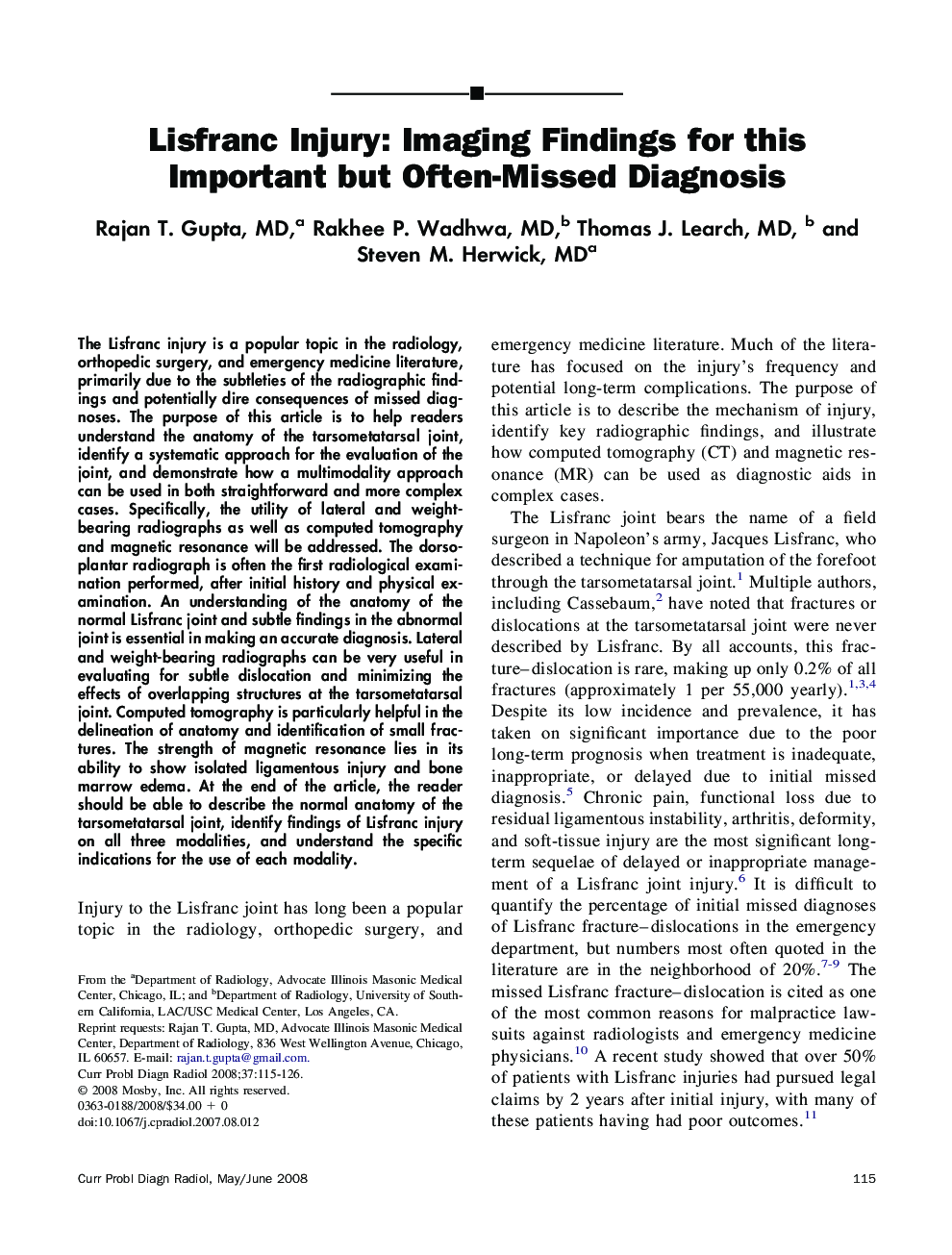| Article ID | Journal | Published Year | Pages | File Type |
|---|---|---|---|---|
| 4223767 | Current Problems in Diagnostic Radiology | 2008 | 12 Pages |
The Lisfranc injury is a popular topic in the radiology, orthopedic surgery, and emergency medicine literature, primarily due to the subtleties of the radiographic findings and potentially dire consequences of missed diagnoses. The purpose of this article is to help readers understand the anatomy of the tarsometatarsal joint, identify a systematic approach for the evaluation of the joint, and demonstrate how a multimodality approach can be used in both straightforward and more complex cases. Specifically, the utility of lateral and weight-bearing radiographs as well as computed tomography and magnetic resonance will be addressed. The dorsoplantar radiograph is often the first radiological examination performed, after initial history and physical examination. An understanding of the anatomy of the normal Lisfranc joint and subtle findings in the abnormal joint is essential in making an accurate diagnosis. Lateral and weight-bearing radiographs can be very useful in evaluating for subtle dislocation and minimizing the effects of overlapping structures at the tarsometatarsal joint. Computed tomography is particularly helpful in the delineation of anatomy and identification of small fractures. The strength of magnetic resonance lies in its ability to show isolated ligamentous injury and bone marrow edema. At the end of the article, the reader should be able to describe the normal anatomy of the tarsometatarsal joint, identify findings of Lisfranc injury on all three modalities, and understand the specific indications for the use of each modality.
